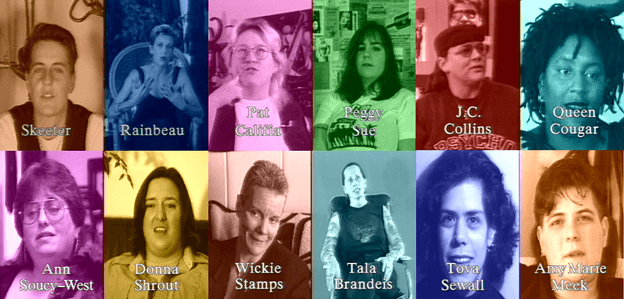

Discover more from ask a sub
On Monday I was browsing Twitter, and between the various stages of Beyoncé meltdown, I found the below tweet asking a question I’ve seen a hundred times. But this time, it hit me differently.
The tweet, which I won’t link to directly because I don’t want to put its well-meaning source on blast, asked for readers’ thoughts on whether “kink being more mainstream due to 50 Shades is a good thing.”
Fifty Shades Of Grey, the book, came out in 2011. And ever since, we kinksters have been wringing our hands about what it has meant for our subculture. Yes, its depictions of kink are irresponsible, fantastical, and badly written. Yes, I am certain that it has produced shaky if not dangerous sexual scenarios in real life. Yes, it personally gives me the ick. But I don’t think the framework of “50 Shades Mainstreamed Kink” is a helpful or accurate one.
First of all, let’s talk about what “mainstream” even means. Does it mean that people have greater access to kink toys than ever before? Well, in that case your local side of the highway adult boutique is responsible for that. Does it mean people have had new kinks implanted in their brains they’ve never considered? Well, that can’t be attributed to 50 Shades when there is an entire porn industry, a thriving ebook erotica market on Kindle, and not to mention thousands of free stories on AO3 to get people into all kinds of stuff. No, I think when we start talking about kink going “mainstream,” it’s people in the community doing the equivalent of me attending a Maggie Rogers show on her first tour and now being surly that my cousin who “doesn’t really like music” is now going to her shows. We want to be cool and part of the in crowd, and we don’t like it when the locals glom on.
But kink is not your favorite band, favorite book, or cozy underrated neighborhood restaurant. It’s an integral part of the human experience. If BDSM is a cohered subculture with its own social mores and methodology, kink is simply any act or practice that steps outside the norm of whatever your culture tells you sex is supposed to be. In America we have several competing narratives about what kind of sex is allowed, but I’d say our top two can be defined as:
A) Christian Heterosexual Missionary In Your Marital Bed Under The Freshly Ironed Sheets And With The Lights Off For The Sake Of Procreation
B) Empowered, Feminist-Approved, Respectful, Totally Equal Sex With The Woman On Top Having Multiple Orgasms
Yes, me calling out B as an unrealistic expectation may make me sound like some kind of TradWife but hear me out — it is a standard of sex that makes some people, especially the ones who are invested in its supremacy, feel really bad when they fall short of the mark. It also stands up as a model to transgress against and leads to a variety of related kinks — D/s play, degradation play, consensual non-consent, and more. Just ask my inbox filled with people telling me they are having a hard time reconciling their desire for submission with their feminist identities (more on that here).
But I digress. What I’m trying to point out is that if you deviate from A or B ever…. Congratulations! You are a sexual deviant! So if the majority of us are perverts, where do we go from here?
The answer actually lies in looking backwards at where we’ve already been. And god damn are we lucky to have a preserved vault of interviews and archival footage in the form of BloodSisters, Michelle Handelman’s documentary film from 1995 tracking the pleasure and activism of lesbian and bi women on the San Francisco leather scene from the seventies through to the mid-nineties. The people presented in the film represent a wide array of gender and sexual identities (the first spoken line of the film comes from a person addressing the attendees of a Leather pageant as “ladies, gentlemen, and everyone in between”) but are cohered under the label of “sisters,” so I’ll use that term to refer to them.
The sisters lead us through the basics of cohered BDSM and Leather with defiant empathy and sharp humor. They explain the brutal rejection they faced in the early to mid-seventies from the sex-negative lesbian second-wave feminist establishment, and the subsequent commitment they made to passing down the practices of safe, sane and consensual kink in writing and person-to-person mentorship. They saw passing down these safety practices and sense of belonging to other potential sisters not only as a vocation, but as activism.

Pat Califia details the activist strategies the sisters employed to get S&M-related books into feminist bookstores, including going into these stores one activist at a time to ask where they could find the S&M section — “I’m a woman, I want these books, this is a women’s issue.” She then explains that she has since pivoted from physical actions to writing because, as she puts it, “writing can go places the picket line can’t.” But that doesn’t mean the wider Leather Dyke community didn’t continue to participate in some stirring and provocative activism. The film features footage from a protest of Clinton’s Don’t Ask Don’t Tell policy where Leather Folk of all stripes dressed as soldiers and conducted public kink scenes in uniform. Leather People’s activism was theatrical, visual, grabby, and, in my opinion, an essential driver of change alongside a concurrent LGBT push for assimilationist politics and presentation. The broader LGBT movement said “we’re just like you,” the Leather people said, “we know you’re secretly just like us.”

So when we now as kinksters talk about kink being “mainstream,” we have to remember that any modicum of acceptance we may have attained was built on the backs of our queer foreparents — people who ventured into the streets in full leather and scratched their way into acceptance among other queer people. Despite the discomfort of their own communities, they pushed relentlessly for the right to exist and love in their own languages. Yes, they wanted acceptance and legal protections (a section of the film features a panel discussing how to avoid legal consequences for practicing S&M), but a huge focus of these activists, lovers, and community members was being visible enough to let others who were still in the closet know that they weren’t alone, and there was a safe place for them to go when they would be accepted and embraced. They weren’t catering to the broader gaze of normative society, they were catering to their yet-to-be-realized siblings.
And as those siblings and descendants, it behooves us to count the privileges their bravery has afforded us: slightly less stigma when coming out to partners, slightly less fear about legal consequences, and, yes, a broader availability of impact toys, kink spaces, and nice latex to wear if that’s your thing. My big gripe here is with situating 50 Shades as the thing that did this, and doing it mindlessly again and again. And while yes, 50 Shades certainly did something, it can’t be solely credited with the strides towards acceptance our community has made in recent decades.
And the problem with the prevalence of the “50 Shades Let The Kink Cat Out Of The Bag” hot take is not just that it’s a bit reductive, but it’s a perfect example of how algorithmic social media has formed the way we think and conceive of our community and history. The takes that inspire the most outrage are the ones that are confidently repeated over and over without any second thought, or desire to retrace our steps by consulting a book, film, or longer form piece of writing. I see this play out within all of the alternative sexuality spaces I occupy, and this kind of outrage-based, thoughtless discourse tragically flattens the depth of experience these communities offer and casually erases history in the process. And the loss is ours, because in forgetting them, we’re missing out on the humorous, sexy, and vulnerable people whose spirits are invoked any time you use a safe word, negotiate your boundaries, or explain the difference between kink and abuse. They already did it all, and deserve to be kept alive. That part is up to us.
All this to say, Bloodsisters is mandatory viewing, and you can get it on Kanopy for free using your library card :)


















I love it how people saying this book and film brought BDSM to mainstream media have no concept of music videos in the 1990s. While what was depicted to the tunes of Madonna and LL Cool J was not exactly perfect, it for sure was introductory.
I've never seen BloodSisters - definitely want to check it out now! But it is annoying that people are still talking about 50 Shades and forgetting all the other work, especially that of queer folks, that has been done to bring kink into the mainstream. There's so much else out there!